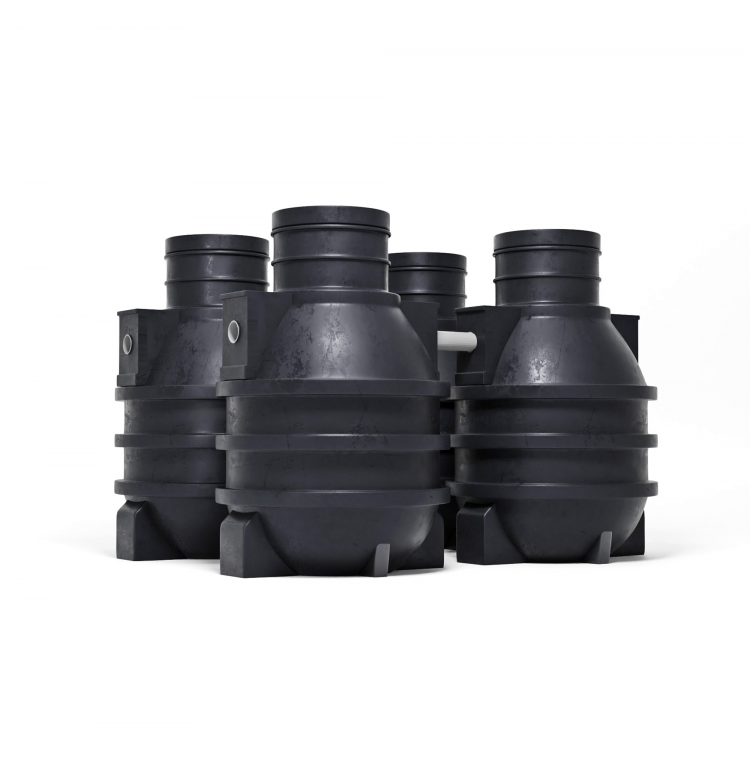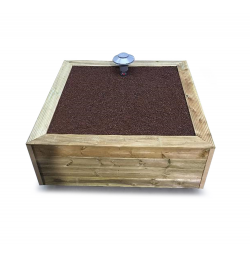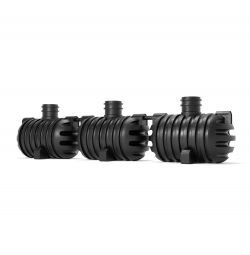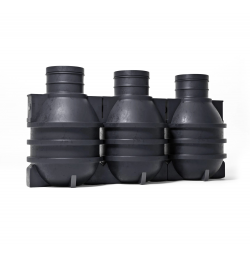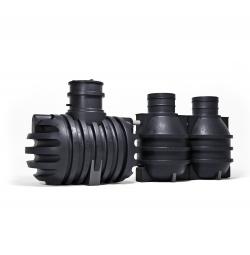- Info
- Downloads
Wastewater treatment from 2 to 7 PE, moving bed
Available in 2 to 5 PE and in 5 to 7 PE.
Consisting of a monoblok of 2 x 2 tanks.
It is possible to connect multiple systems in parallel.
Benefits of the system:
· Certified according CE EN12566-3
· On the base of moving bed technologies
· 4 reinforced rotomoulded tanks in monobloc, equipped completely ready to install
· Ultra strong tanks with only 1% deformation and 25 years of guaranty
· Light weight: easy to transport and to install
· No adjustment
· Low energy consumption (+/- 80 Kw/y/person for the MB5 and +/- 90 Kw/y/person for the MB7)
· Low maintenance cost
· Delivered with stainless steel pump housing.
· 5 PE and 7 PE certified according EN12566-3
· Bigger systems available up to 30 PE
Specifications
This Boralit system is standard conceived of 4 tanks, delivered as monoblok. Namely 2 pre-treatment tanks (primary sedimentation), aeration and a clarifier (secondary sedimentation). All manufactured in high quality PE, a material with multiple advantages.
OPERATION OF AN MOVING BED SYSTEM
The small wastewater treatment plants from Boralit working according the moving bed system. The First 2 tanks are the pre-treatment tanks and functions like a septic tank. The third tank is periodically aerated. In this tank is a mixture of waste water and biomass. This biomass develops in the waste water, in the form of micro-organisms. In this tank is a support material to hold the bacteria better in the tank.
In the water treatment plant of Boralit, the aeration is used for both the oxygen supply as for mixing the contents in the reactor. By continuously aerating the installation, the aerobic bacteria are growing. By the periodically aeration there is an alternating aerobe and anaerobe circumstance.
The separation between the treated water and the activated sludge takes place in the clarifier. A part will be returned to the aeration tank (middle tank). This by means of a sludge return. This increases the purification process significantly. Occasionally the sludge should be removed from the system, so the biomass in the aeration tank is kept at the desired level.
The Opur Supercompact MB wastewater treatment plant is based on the moving bed technology.
Opur Supercompact is built with 4 tanks that are connected to each other as a monoblock. The system consists of 2 first settlement tanks (1 and 2), aeration tank(3) and final settlement tank (4), and has to be installed underground.
First settlement:
In the first settling tanks, the solid particles are stopped and gradually liquefied. Accidental dumping of small amounts of detrimental substances are partially taken care of in this tanks. The biological transformations are done anaëroob (without oxygen).
Aeration tank:
By means of a bubble aerator oxygen is dissolved into the liquid, which enhances growth of aerobic bacteria. These bacteria will consume the biological waste.
The continuous flow of air bubbles also creates optimal mixing and consumption of the biological waste and enables treatment of waste waters entering the system.
Final settlement :The third tank is the second settling tank (secondary sedimentation), based on a double final settlement . Here the sludge settles down and from this tank the purified water is discharged from the still water area. There is no need to add bacteries during the start-up of the system. A sludge return system will return separated sludge to the aeration tank, and will help to bridge periods with limited or no influent (e.g. during vacation period) without negative impact on effluent results
Designs:
They are available in 2-5 PE and 5-7 PE.
Consisting of a monoblok of 4 tanks.
It is possible to install several systems in parallel.
Certification:
CE: according to EN 12566-3+A2 2013
French agreement: according to EN12566-3+A2 2013 with numbers ANC 2014-013 and ANC 2014-013 ext1
Table

